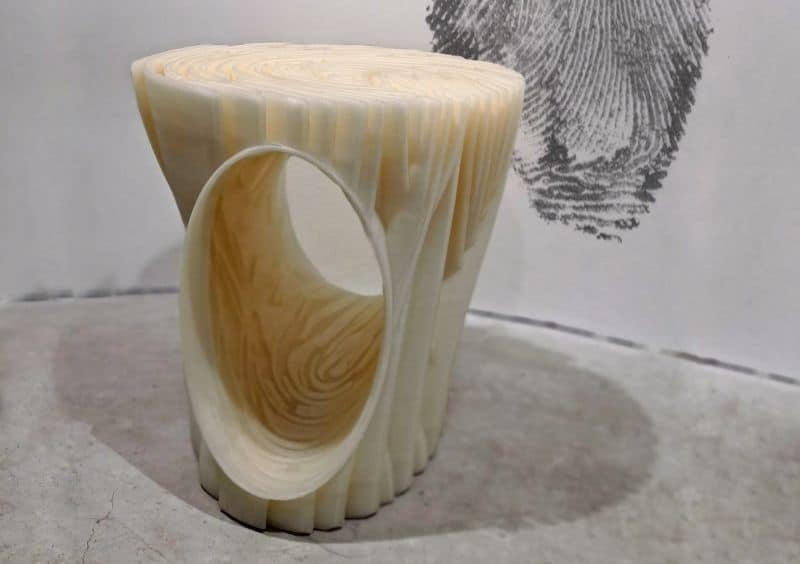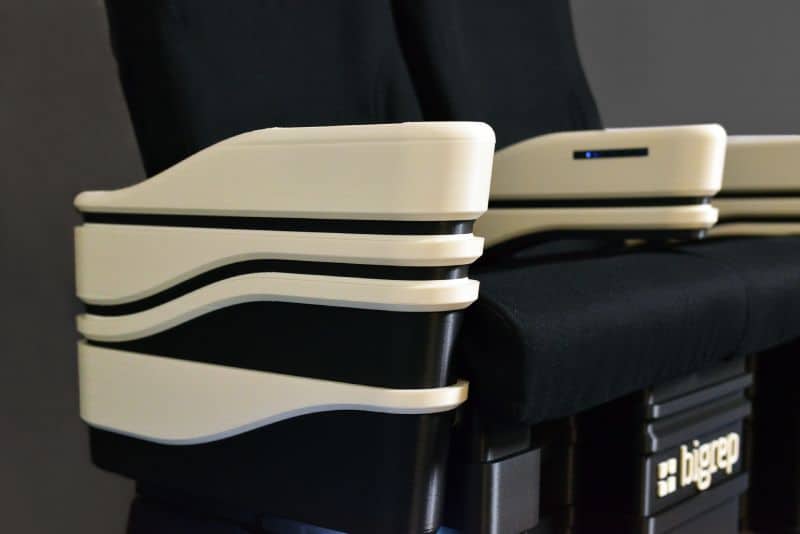The old adage, two heads are better than one, simply indicates that two people can solve a problem better than an individual can. This is certainly the case when it comes to 3D printing, and why dual extruder technology is must-have for any engineer, designer, architect or artist. Single extruder technology that is available on the market today is incredibly limited and actually defeats the true purpose of a 3D printer, the ability to transform complex, digital designs into tangible, physical items. If you’re a serious designer with aspirations to bring your ideas to life, then you should never underestimate the value of a professional 3D printer. First, let’s understand the basics of 3D printing.
Limitations of Single Extruder 3D Printers
The vast majority of 3D printers available today operate with FDM (Fused Deposition Modeling) or FFF (Fused Filament Fabrication) technology. Essentially, thermoplastic material is fed through a heated nozzle that melts the material and simultaneously deposits it on the build platform. It’s arguably the simplest and most effective 3D printer technology that has been adopted by consumers and professionals in every industry imaginable.
With single extruder printing, you are able to 3D print very basic parts and shapes. For example, it’s possible to print a small pyramid or a six-sided box, because the geometries are not challenging and do not require additional design or rework. But 3D printers are supposed to enable the impossible. Instead of trying to fit a square peg in a round hole, why not redesign the peg? Why not customize the hole and create new functionality for the whole system? Adding a second material extruder enables this and so much more.
The Value of Dual Extruder 3D Printers
Advancements in 3D printing materials are enabling new applications across several different industries. What we are experiencing today will look very different tomorrow with the current rate of technology improvements and adoption. Dual extruder 3D printing is the primary mechanism fostering the next generation of industrialization because it allows engineers to design with freedom and without constraints. Compared to conventional manufacturing methods or single extruder 3D printers, multi-material 3D printers will equip product development teams to enhance functionality, aesthetics and other critical requirements.
“A man will be imprisoned in a room with a door that’s unlocked and opens inwards; as long as it does not occur to him to pull rather than push.”
Ludwig Wittgenstein - Referenced in Aaron Council’s 3D Printing: Rise of the Third Industrial Revolution
A dual extruder 3D printer goes beyond design & print applications. Instead, it’s a mind-opening technology that can influence so much more. For example, single extruder 3D printers rely on the basic principles of fabrication and will simply print parts layer-by-layer with one material. This eliminates the ability to create complex parts, internal channels, or working gears which leads to a lack of functionality or purpose. Most engineers and designers operate with CAD (computer aided design) software that allows them to digitally design prototypes and products in a 3-dimensional space that doesn’t adhere to natural forces (i.e. gravity). Therefore, designs can become quite complicated and require a technology that is sophisticated and advanced enough to produce these parts.
That’s what dual extruder technology brings to the table for designers and engineers. From inexplicable art to impossible prototypes, this further supports why 3D printing is becoming the primary tool for so many different industries. To further paint the picture, or build the masterpiece, let’s dive deeper into several different dual extrusion use cases and how different industries are applying it today.

Impossible Parts
The true beauty of a dual extruder 3D printer is the ability to combine model (M) and support (S) materials. Essentially, you are able to 3D print your model in a PLA thermoplastic material and simultaneously print water soluble support structures out of BVOH. This is the science that enables true design freedom and flexibility. You can design and print in a 3-dimensional space that goes way beyond surface level. Now, it’s possible to create interlocking features for workable gears or internal channels for fluid and air passageways. This is only possible with the use of support structures that are literally washed away once the 3D print is finished.
Tips for Users: Different support materials eliminate post processing nightmares or enhanced aesthetics. Contact our Engineering team today to learn more.
Enhanced Mechanical Properties
Let’s take it a step further and instead of Model +Support, why not Model 1 + Model 2? Yes, that is completely possible with dual extruder 3D printers and will provide improvements to the mechanical properties of your part. Combining Model 1 + Model 2 can be a strategic and helpful feature for those product development teams that wish to take functionality to the next level.
For example, lightweighting is a common tactic used by many transportation, automotive and aerospace companies that wish to reduce costs through design. Eliminating weight = less energy costs. A door, table or chair must retain the same strength capabilities but instead of a fully dense part, engineers can create honeycomb internal structures with lighter weight plastics. M1 is a PLA Shell and M2 is a PVA Ultralight infill material that ultimately prints a part with the same strength characteristics, but with less weight associated.

Ergonomic Improvements
Ergonomics is the study of human and product (or machine) interaction. Those who design consumer products are constantly iterating prototypes to test ergonomics and user satisfaction (i.e. how to make user friendly, comfortable products). You’ll notice that the majority of consumer products and electronics are designed and built with soft touch overmolds, rubber or TPU materials to enhance comfort. Think of a grip on a power tool. With dual extruder 3D printers, engineers can combine rigid plastics with soft touch flexible materials to produce overmolds. Material 1 is a Pro-HT plastic with enhanced strength properties combined with Material 2, a TPU categorized as a Shore 98 A flexible material.
Tips for Users: Using PLA as a support material for TPU printed singularly will enhance aesthetic features. Contact our Engineering team today to learn more.
Improve Aesthetics
We have discussed functionality, now let’s turn to the possibilities for artistic features with multicolored 3D printing. We do not live in a monochromatic world, so we do not expect you to design for one. Oftentimes, prototypers will present their products to focus groups or potential customers for invaluable feedback to validate a design. It’s important to provide parts that are aesthetically pleasing and match a color scheme for the end product. Having multi colored parts is valuable for other applications - such as color coded safety fixtures on assembly lines, diagram models used in healthcare communications or other research, education or artistic purposes.

True Mass Production
Unique to BigRep is that ability to print Tandem mode, which splits the printing platform in half and enables the production of parts in twice the time. The dual extruders are separated by distance, but connected by advanced software so that they mimic each other and print identical parts on the platform. This is ideal if you wish to begin batch production and want to bypass tooling, machining and other costly manufacturing methods. BigRep already offers one of the largest build platforms in the industrial market, and Tandem mode enables manufacturers to react immediately and produce parts on demand. This is unheard of in the marketplace today, and provides a significant time and cost savings advantage to users.
Tips for Users: If you have a print bigger than 8 kilos with the same material, split the STL, and print the first 8 kilos with Extruder 1. Use Extruder 2 with the remaining material which will allow you to print 16 kilos with the same filament.
Learn more about Tandem Mode by talking to our 3D printing experts today.
This is only a small collection of advantages awarded by a dual extruder 3D printer. It’s important to remember that new materials drive applications, and the book of 3D printing continues to write itself. Single extruder technology is a toy made for tinkerers and hobbyists. In order to produce parts that are functional and reliable, dual extruder 3D printers are a necessity.
The Future of Dual Extruder 3D Printers
To summarize the benefits: Industrial 3D printers and dual extruder technology with BigRep enables you to produce impossible parts with support material. It exceeds a variety of functional requirements such as mechanical property improvements or soft touch overmold applications. Dual extruders provide a pathway for artists, architects and creatives to think outside of conventional fabrication methods and bring color, realism and life to their designs.
Where does dual extruder technology go from here? Are three heads better than two? Maybe, but the evidence isn’t there to support it quite yet. In the meantime dual material printing continues to be such a major advantage for industrial engineers and designers. We recommend staying in touch with us, since we are constantly evolving our technology and materials to further the adoption of 3D printing.
Do you have a new application you want to bring to life? We want to hear from you!

